Jul 14, 2024 | Contracts, General
Non-disclosure Agreements hereinafter referred to as NDAs are contracts that parties sign to protect their confidential information. This confidential information usually consists of trade secrets and formulas that are used by companies to achieve success in their respective industries. Therefore, NDAs are essential to prevent information from leaking to one’s competitors. Most NDA disputes boil down to a breakdown of trust i.e., someone sharing confidential information which they aren’t allowed to share either accidentally or intentionally. In such an event, companies approach court to seek redressal. This article explores how courts handle a breach of a NDA and the consequences that follow.
Statutory Provisions on NDAs
Since NDAs are essentially contracts, Indian courts rely on the Indian Contract Act, 1872 to determine their validity. If a NDA fulfils the requirements under the Act, the same is considered legally enforceable by law. Hence, in the event of a breach, the aggrieved party can recover damages as per Sections 73 and 74 of the Indian Contract Act, 1872. Further recourse is provided under various acts inclusive of the Information Technology Act, 2000 and the Copyright Act, 1957.
Judicial Approaches to NDAs
Indian courts have dealt with several cases of breach of a NDA and have offered valuable insight and principles behind such agreements.
 Courts often utilize an order of injunction which is a court order that prevents a party from performing a specific act which could be detrimental to the aggrieved party. Since the leak of confidential information can have adverse effects, courts often invoke this order. This is seen in cases such as Homag India Private Limited v. Mr. Ulfath Hussain and Others (2016). This was a Karnataka High Court judgment whether the defendant was an employee who had the access to the plaintiff companies’ confidential information. The plaintiff had alleged that the defendant had leaked said information to a rival company. Following the review of evidence and the facts of the case, the High Court remarked that the trial court should have granted an order of temporary injunction. This affirms how important an injunction order is to the aggrieved party so that further information is not leaked.
Courts often utilize an order of injunction which is a court order that prevents a party from performing a specific act which could be detrimental to the aggrieved party. Since the leak of confidential information can have adverse effects, courts often invoke this order. This is seen in cases such as Homag India Private Limited v. Mr. Ulfath Hussain and Others (2016). This was a Karnataka High Court judgment whether the defendant was an employee who had the access to the plaintiff companies’ confidential information. The plaintiff had alleged that the defendant had leaked said information to a rival company. Following the review of evidence and the facts of the case, the High Court remarked that the trial court should have granted an order of temporary injunction. This affirms how important an injunction order is to the aggrieved party so that further information is not leaked.
Another landmark judgement which further establishes the enforcement of a NDA was the Bombay High Court case of Zee Telefilms Ltd. v. Sundial Communications Pvt. Ltd. (2003). In this case, the plaintiff company had approached the defendant with a creative concept idea for a television program. After presenting it, the plaintiff company did not hear from the defendant and later found that their original concept was being used for a show without their permission. The plaintiff alleged a breach of confidential information and the court ruled that they found the original concept as well as the defendant’s work to be similar in nature and granted an injunction preventing the defendant from airing the stolen idea.
However, a popular question that is debated in the public forum is whether NDAs can be unreasonably restrictive of an individual’s rights? This is particularly noticed in cases where the employee’s rights in a company contract are being dealt with. The courts usually interpret such cases in an attempt of balancing public policy and interests as well as the rights of companies. In the Bombay High Court case of V.F.S. Global Services Pvt. Ltd. v. Mr. Suprit Roy (2008), the court observed that when it comes to employee confidentiality agreements, it is important to ensure that it the same is not unreasonably restrictive of the individual rights of the employee. Another landmark judgement with regards to this is the Supreme Court case of Niranjan Shankar Golikari v. Century Spinning and Manufacturing Co. Ltd. (1967). This case concerned post-termination employment restraints. The court in this case sought to limit an over-extensive application of a post termination employment restraint. While restraints during the course of employment were upheld, only a partial restraint and not an absolute restraint is allowed. For instance, restrictive clauses can only abstain an employee from divulging confidential information but cannot prevent the employee from joining a rival company as that would be considered an absolute restraint.
While upholding NDA’s is vital in ensuring that businesses flourish, courts have attempted to recognize the need for a balanced approach which takes into account both employee and company rights. Since NDAs are inherently restrictive in nature, the courts approach reaffirms the principle of a balance of rights.
Author: Ambika Menon, O. P. Jindal Global University
Please contact us at info@origiin.com to know more about our services (Patent, Trademark, Copyright, Contract, IP Licensing, M&A of companies)
Subscribe to YouTube Channel HERE
Join LinkedIn Group: Innovation & IPR
WhatsApp: +91 74838 06607
Jul 5, 2024 | Patent
Welcome to the world of Kidventors, our genius Kid-Inventors.
Have you ever imagined that in a world of experienced engineers, scientists, doctors, and brilliant minds; the next big thing in the world comes from the bright minds of kids. As we know, creativity has no age limit and the best ideas come from the unlikeliest places. Yes, you are right! These young inventors are not only thinking of fantastic out-of-the box ideas but are also trying to bring real changes in the world.
When we think of it, what actually helps the Kid-ventors think beyond their age is their boundless imagination and fearless challenging behaviour. Unlike adults, children often approach problems with fresh perspectives and unbridled creativity. They see the world not as it is but as it could be and this vision is the driving force behind their groundbreaking inventions.
According to a great saying, age is just a number. These brilliant young innovators are here to make a difference and their inspiring stories are not only heartwarming but also a reminder that we should always nurture and support the creative potential in every child. After all, today’s curious minds could be tomorrow’s inventors who are set to change the world. Let’s dive into some of the coolest inventions and the incredible stories behind these brilliant and beautiful minds, starting from household items to out of space devices.

Sam Houghton is one of the youngest recognized kid inventors from the United Kingdom who came up with the idea at the age of 3 and became an inventor with a patent, at the age of 5. Sam invented “A sweeping device with two heads”, where the invention claims that the sweeping device for sweeping a surface comprises a combination of two brushes connected by a resilient connector; the first brush comprises a brush head, a plurality of bristles affixed to the brush head and a handle extending from the brush head; the second brush comprises a brush head, a plurality of bristles affixed to the brush head and a handle extending from the brush head, wherein the resilient connector serves to retain said combination of brushes in resiliently moveable relation to one another in use.

Gitanjali Rao was 11 years old when she thought of something incredible arising from her main aim which was to serve the society and help the people in need. When she was 9, she came to know about Flint in Michigan facing a crisis of lead-contaminated tap water. Clean water is a basic human right, she thought, but the water in Flint was poisoned with lead and the kids drinking it had brain damage and several health issues. She came across an article on carbon nanotubes, used to detect food spoilage through resistance created by gases in air, and her mind churned to know if it would also work to detect lead in water. After more than a year of research, brainstorming, prototyping, and testing, Gitanjali invented a device that uses nanotechnology to test water for contaminants and deliver fast, accurate results—all before she turned 11 years old. Gitanjali decided to name the device “Tethys,” for the Greek goddess of fresh water, and on August 10, 2021, she received a patent from the US patent office for her invention.
Her invention is a system and method for detecting contaminants in water, where the device may include: a sensor configured to detect one or more contaminants in a liquid when the sensor is dipped into the liquid; a computing device connected to the sensor, the computing device being configured to determine a resistance of the device when the sensor is dipped into the liquid; and a wireless electronic device connected to the computing device via one or more wireless links and configured to receive the resistance of the device when the sensor is dipped into the liquid from the computing device, and the wireless electronic device determines a level of contamination in the liquid based on a difference between the resistance of the device when the sensor is dipped into the liquid and a set or predetermined resistance.
Amazing right!

Anushka Naiknaware, at the age of 13, invented a bandage that monitors the healing process of wounds. Anushka is an Indian-American girl, who with dedication and innovation capabilities, devised a bandage having significant implications for medical care worldwide. Her invention uses biocompatible sensors to track moisture levels in wounds, ensuring optimal healing conditions.
A sensor for detecting moisture comprising a substrate, a pattern made on the substrate using a nanoparticle conductive ink and having at least two conductive terminals to the pattern. The sensor may further include an electronic device to monitor the impedance at the terminals and can provide representative audio or visual output; or may transmit the measured impedance or the corresponding representative status over wired or wireless interface to other electronic devices. The interfaced electronic devices may further transmit all the received data to data servers for additional processing and Internet services.

At the age of ten, Bishop Curry V was inspired to invent a way to prevent the accidental death of children in hot cars after a tragedy involving a young child in his neighbourhood. Bishop came up with an idea for a device that included motion sensors, global positioning, messaging capabilities, and many more to develop a device called Oasis, which is a life-saving device for children left in a hot car. Bishop’s device, Oasis, attaches to the top of a child’s car seat, wherein a motion sensor detects a child in a motionless car, and within minutes sends a message to the parents, then alerts the authorities, including the car’s location. At the same time, the device activates a thermoelectric cooling device to blow cool air on the child until help arrives.
Bishop’s invention is a child passenger safety seat emergency cooling and notification system, for detecting hot car seat situations, manually cooling the child in those situations, and facilitating one or more alert notifications. An apparatus receives sensor data that it uses to detect the presence of a child in a car seat in a vehicle. Multiple sensors provide added security against false positives. When a child is detected, the apparatus activates a cooling flow of air towards the child if the temperature rises above a threshold. The apparatus waits until the vehicle is not moving and off before initiating notifications to one or more subscribing devices. Once off, and once the temperature of the child further rises or has the air flow on for a period of time, the apparatus sends a notification to the subscribing devices. If the child is not removed within a set period of time, then emergency responders are notified.
Hailing from Tamil Nadu, Rifath Sharook made headlines globally when, at the age of 18, he developed the world’s lightest satellite, named “KalamSat” in honor of the late Indian president and scientist Dr. A.P.J. Abdul Kalam. The satellite weighs only 64 grams and it was launched by NASA, marking a significant achievement for young Indian innovators.
When Shaarook was a child, he’d spend hours staring through the lens of a telescope with his dad. Sadly Mohamed Farook, a local professor and scientist, passed away when his son was in primary school. But Shaarook’s passion for space lived on. As a young teenager he joined Space Kidz India, an organisation dedicated to nurturing young people with a passion for technology and he formed a six-person team and dedicated the next four years to making a satellite, under the guidance of the organisation’s founder and director. Eventually they invented KalamSat: the lightest satellite in the world.
At just 64g, it weighs about as much as a large battery. It’s essentially a 3.8cm-wide cube made from 3D-printed plastic, reinforced with carbon fibres. It contains several different kinds of sensor, including those to measure temperature, magnetism, altitude and any strains on the structure as it hurtles through space. It also has its own power source and a small computer, to turn on all the sensors at the right moment and store their data.
These young inventors demonstrate that age is no barrier to creativity and innovation. Their remarkable achievements at such a young age inspire others to explore their ideas and make a difference in the world.
Author: Megha Nadiger, Origiin IP Solutions LLP
Please contact us at info@origiin.com to know more about our services (Patent, Trademark, Copyright, Contract, IP Licensing, M&A of companies)
Subscribe to YouTube Channel HERE
Join LinkedIn Group: Innovation & IPR
WhatsApp: +91 74838 06607
Jun 30, 2024 | IPR & Business
IP assessment, due diligence & valuation play an important role at the time of company acquisition for buyer and seller alike as it would help them gain clarity as to what they are getting in the form of IP and whether the IP is worth acquisition or not. Typically, the IP which exists in the company is either registered or unregistered. The registered IP is often in the form of patent, trademark, design, copyright whereas the unregistered IP may be in the form of know-how, trade-secret, protocols, processes, confidential information etc. Docketing of registered IP is much easier than assessing unregistered IP because identification of IP which exists in the form of know-how, trade-secret can be really challenging. Moreover, transferring such unregistered IP at the time of company acquisition could be quite prone to misappropriation if stringent processes and guidelines are not followed.
The IP audit, followed by IP due diligence is beneficial to assess a collective value. Some of the important considerations for buyer and seller alike are as follows:
IP Audit and Segregation of IP
Firstly, it is required to take stock of all IPs and segregate them on the basis of type, relevance and priority. The following steps may be helpful:
- All forms of IPs, registered or unregistered, shall be listed. While it is easy to list the registered IP, it may be quite challenging to identify, docket and valuate the latter.
- The first round of segregation of IP shall be done depending upon its type, registration status and its relevance to the business.
- Legal status of registered or the filed IP shall be identified to ensure that the IP is not expired or abandoned. If any official formality is to be fulfilled with respect to such IP, it may be done to ensure that the IP remains active and enforceable. This step is significant to avoid what occurred between Ebay and Skype. After 4 years of Ebay’s acquisition of Skype, they learnt that Skype did not own many of its key intellectual property rights owing to which they had to abandon their plans to launch Skype’s Initial Public Offering in the share market.
The second round of segregation shall be done depending upon relevance of IP for the business.
- In case of the registered IP, which is not relevant for the business, options of out-licensing or sale of such IP may be explored.
- If there is an IP which is not strong enough to get registered, such IP may be published as a research paper as well.
- Sometimes, companies may also consider donating some of their IP or let the IP abandon or expire. For instance, Disney’s Steamboat Willie, one of the first iterations of Mickey and Minnie Mouse is now available in public domain as the copyright protection has expired after a long period of 95 years.
Docketing of IP
Secondly, docketing is a process of managing, documenting and tracking deadlines and documents related to the prosecution of IP assets, such as patents, trademarks, designs and copyrights. After segregation of IP is done to identify the relevant IP, following steps shall be performed:
-
- Registered IP shall be docketed to observe the important official timelines, such as responding to official communication, paying the renewal fee to maintain it. For instance, post-acquisition of Jaguar Land Rover, it can be observed that Tata Motors is filing several patents across the world since it has acquired the necessary intellectual property rights of Jaguar Land Rover.
- As a part of docketing, it is also required to note down expiry date of IP. For example, if there are only a few months remaining for a patent to expire, it may not be worthwhile to transfer that patent from seller to the buyer as transferring the patent requires amendments to be done and the cost of amendment may be high.
Due diligence and Valuation of IP assets
Thirdly, registration certificates of the registered IP shall be reviewed to understand whether there is a clear title of IP assets and on this basis, the valuation of IP shall be determined. In 2007, Kingfisher airlines merged with Deccan Airlines and following the merger, the Deccan airlines was named as “Kingfisher Red”. This completely diluted the trademarks of both the companies and there was a lot of confusion between Kingfisher and Kingfisher Red. owing to which Kingfisher Airlines suffered heavy losses. This merging which resulted in the creation of “Kingfisher Red” caused degradation in the brand status of Kingfisher Airlines and the company was deprived of its premium value.
Liability and potential risk after acquiring IP
Lastly, Acquiring IP requires a lot of official formalities to be fulfilled in each country where IP is filed for or registered and Important considerations and liabilities to be considered for acquisition are as follows:
-
- The buyer party must know that acquiring an IP comes with a lot of liabilities. For instance, transfer of IP from the seller to the buyer requires a lot of amendments in the official records of the office where IP is filed for or registered. Oftentimes, change of attorney also is preferred by the buyer for the purpose of prosecution which may cost extra. Post acquisition of IP and amendments in the official record, the buyer still has to bear liability in the form of annual renewal fee to maintain the IP For instance, prior to a court declaration in 2019, the ‘well-known’ status of the Vistara Airlines, a joint venture between TATA Sons Pvt Ltd and Singapore Airlines Ltd, remained under dispute since the requisite form and fees for inclusion of this trademark in Trade Mark Registry’s Well-Known trademarks was not done.
- Further, if any of the IPs are litigated or opposed, due-diligence shall be performed to know what stage of litigation or opposition it is in and to observe what the further course of action will be. The failed merger between Indian pharmaceutical company Ranbaxy with Japanese Pharmaceutical company Daiichi Sankyo has several examples that the latter faced in terms of litigation hurdles, there was a settlement with US based pharmaceutical company Pfizer over a patent dispute; a settlement with Swiss pharmaceutical company Roche over a patent dispute; a payment of 500 million dollars to resolve a lawsuit and federal charges over the Indian company selling improperly manufactured drugs etc.
IP may be a valuable intangible asset playing a vital role at the time of M&A of the company. Prior to assessing the value of the IP, due diligence is necessary to understand legal status. The business relevance of IP as may be observed can be a game changer.
Authors: Bindu Sharma (CEO, Origiin IP Solutions LLP), Janaswamy Venkata Lakshmi Tanya, Symbiosis Law School, Hyderabad)
Please contact us at info@origiin.com to know more about our services (Patent, Trademark, Copyright, Contract, IP Licensing, M&A of companies)
Subscribe to YouTube Channel HERE
Join LinkedIn Group: Innovation & IPR
Jun 29, 2024 | Patent
A. Introduction
An ECG (electrocardiogram) is a test that records the electrical activity of the heart, including its rate and rhythm. An ECG records the electrical signals in the heart and it is a common and painless test used to quickly detect heart problems and monitor the heart’s health.
In a human body, the nerve and muscle cells communicate with each other using electrical and chemical signals. Regular electrical signals also control our heartbeat. These signals are sent by a group of cells in the right atrium of the heart known as the Sinoatrial Node (SA node), and they spread through the heart muscle tissue as tiny electrical impulses. This causes first the atria and then the ventricles of the heart to contract. The way that these signals spread through the heart can also be measured on the surface of our skin. An ECG measures these changes in electrical signals (or, in fact, voltage) on different areas of skin and plots them as a graph.
A health care provider often use an ECG to determine or detect:
- Irregular heart rhythms (arrhythmias);
- If blocked or narrowed arteries in the heart (coronary artery disease) are causing chest pain or a heart attack;
- Previous heart attack (s); or
- Efficiency of some certain heart disease treatments, such as a pacemaker.
The three major types of ECG commonly used are:
Resting ECG: The resting ECG involves lying still on the back with a bare chest. It is necessary that the patient lies calmly and comfortably during the test because tensing the muscles, moving, coughing or shaking can affect the results. The measurement needs about one minute, or five minutes.
Exercise ECG: The electrical activity of the heart is measured while the person is physically active. This usually involves riding an exercise bike. The degree of exertion is gradually raised to a high level as the pedals become harder to rotate. If there are irregularities in the ECG, the test is stopped early. In addition to the ECG graph, this test measures the power output in Watts. Your blood pressure is also checked regularly.
Holter monitor: The electrical function of the heart is normally measured over 24 hours. Three or four electrodes are attached to the chest, and a small recording device is worn on a belt. The ECG data is then transferred to a computer later on at the doctor’s office for analysis. A Holter monitor may be utilized if, the person only has an irregular heartbeat some of the time and it doesn’t show up in a “normal” ECG
B. Objective of Patent Landscape
We, at Origiin, prepared this Patent Landscape Report for ECG to understand various trends with regard to patent activity in this space. We analyzed the patents filed, published and granted between the year 2022 and 2024. The search strategy used to generate the data to prepare this report is based on a combination of predetermined International Patent Classification (IPC) codes, as well as specific keywords.
We observed that the companies based in the United States, India and China Taipei are major contributors of patent filings in the area of EGG. The leading patent filing companies include the Zoll Medical Corporation company, Biosense Webster Israel Ltd. and Bardy Diagnostics inc.
C. Parameters used for Patent Landscape Analysis
In this report, we studied the following parameters and trends:
- Patenting Trends for the year 2022 to 2024
- Distribution of Patents based on the Assignees
- Jurisdiction based Global Patent Filing Trends
- Technology classification based on IPC classification
- Activities of Competitors based on area of Research (IPC)
- Estimated top 10 industries and technology areas between 2022 and 2024
- Estimated top 10 owners between 2022 and 2024
- Estimated top 10 Assignee Countries between 2022 and 2024
- Estimated top 10 priority countries between 2022 and 2024
- Estimated top 10 publication countries between 2022 and 2024
D. Patent filing trend between years 2022 to 2024
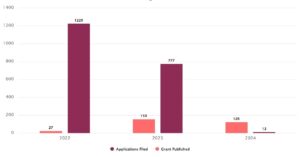
Figure 1: Patent filing trend between the years 2022 to 2024
The Figure 1 depicts the distribution of patents for ECG between the years 2022 to 2024, including both applications filed and granted patents. The graph shows that the highest number of applications were filed in 2022 with 1225 patents followed by 2023 with 777 patents. However, the lowest number of patents were granted in the year 2022 with 27 patents compared to 2023 with 159 patents and 2024 with 126 patents. Overall, filings for ECG patent families is gradually decreased in the time period between 2022 and 2024.
E. Distribution of Patents based on the Assignees

Figure 2: Distribution of Patents based on the Assignees
As indicated in Figure 2, Zoll Medical Corporation company is the key player with 84 patents. Zoll Medical Corporation company is mainly focused on improving outcomes with novel resuscitation and acute critical caretechnology. The next key player is the Biosense Webster Israel Ltd. with 33 patents. Bardy Diagnostics inc. has 32 patents while Samsung Electronics Co. Ltd has 31 patents. The next in line is Medtronic Inc and West Affum Holding Designated Activity Company with 28 patents. The Apple Inc. and GE Precision Healthcare LLC come next with 26 patents each. Bard Access System Inc. has 25 patents while West Affum Holding DAC follows with 24 patents.
F. Jurisdiction based Global Patent Filing Trends
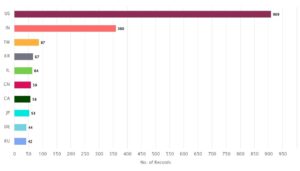
Figure 3: Distribution of Patent based on the jurisdiction
The Figure 3 shows the distribution of patents based on the jurisdiction. The maximum number of patents, i.e., 909, were filed in the US (United States) and rest of the patents were issued in the other jurisdictions, such as, India (IN) with 360 patents, Chinese Taipei (TW) with 87 patents being the prominent followed by Korea (KR) with 67 patents, Israel (IL) with 64 patents, China (CN) with 59 patents, Canada (CA) with 58 patents, Japan (JP) with 53, Germany (DE) with 44 patents and Russia (RU) with 42 patents.
G. Technology classification based on IPC classification
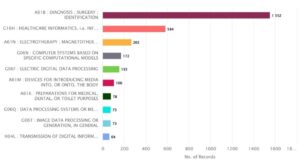
Figure 4: ECG Patent Distribution based on main IPC Code Classification
The Figure 4 indicates the patent distribution based on main IPC code. The top spot is occupied by the diagnosis, surgery indications with 1552 patents families. Other major players include healthcare informatics with 584 patent families, electrotherapy: magnetotherapy with 265 patent families and computer system based on computational models with 172 patent families. Electric digital data processing follows with 155 patents. Devices for introducing media into, or onto, the body has 106 patents while the next in line i.e., Preparations for medical, dental or toilet purposes holds 78 patents. Data processing systems and Image data processing or generation in general hold 73 patents each followed by Transmission of digital information with the least number of patents ie 64 patents.
H. Activities of Competitors based on Area of Research (IPC)
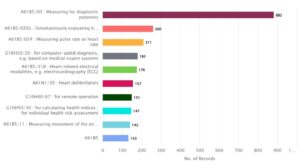
Figure 5: Electrocardiogram (ECG) Distribution of Patent based on Competitors and Area of Research (IPC)
The Figure 5 depicts the distribution of patents based on competitors and Area of Research (IPC). The top spot is occupied by IPC A61B5/00 i.e., measuring for diagnostic purposes with 882 patents. Other major class includes A61B5/0205 ie simultaneously evaluating both cardiovascular conditions and different types of body conditions, e.g. heart and respiratory condition with 260 patent families and measuring pulse rate or heart rate with 211 patent families. IPC G16H50/20 for computer aided diagnosis e.g. based on medical expert systems with 181 patent families. Heart-related electrical modalities with 176 patent families while the next in line is heart defibrillators with 157 patents. IPC G16H40/67 Remote operation purposes hold 151 patents. IPC G16H50/30 i.e., for calculating health indices ie. for individual health risk assessment purposes hold 147 patents. Measuring movement of the entire body or parts ie. head or hand tremor, mobility of a limb in general hold 142 patents followed by A61B5 is holders for multiple electrodes with the least number of patents ie 133 patents.
I. Estimated top 10 industries and technology areas between 2022 and 2024
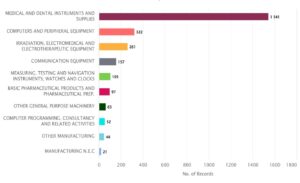
Figure 6: Electrocardiogram (ECG) Distribution of Patent based on Industries & technology.
The Figure 6 indicates major industries and technology areas between 2022 and 2024. Medical and Dental instruments and Supplies is the major industry in the field. Computers and Peripheral Equipment follows next with 322 patents. The next in line is Irradiation, Electromedical and Electrotherapeutic Equipment industry with 261 patents. The Communication Equipment industry holds 157 patents while the Measuring, Testing and Navigation Instruments especially Watches and Clocks has 105 patents. The Basic Pharmaceutical Products and Pharmaceutical Preparatory industry has 97 patents followed by other general-purpose machinery with 63 patents. Computer programming, consultancy and related activities hold 52 patents while other manufacturing industries hold 48 patents. The least in number is the manufacturing N.E.C industry with 21 patents.
J. Estimated top 10 owners between 2022 and 2024
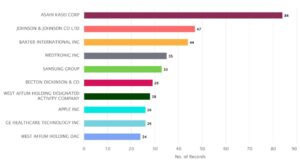
Figure 7: Electrocardiogram (ECG)Distribution of Patent based on Current Owner
As indicated in Figure 7, Asahi Kasei Corp is the major player with 84 patents. Asahi Kasei Corp contributes to the advancement of medical treatment worldwide via continuous innovation in various fields, including medical device systems that respond to unmet needs such as chronic and acute renel disease, neurologic and other intractable conditions.The next key player is the Johnson & Johnson Co Ltd with 47 patents, which is a producer of medical devices and pharmaceutical products. The next in line is Baxter International Inc.with 44 patents. Medtronic Inc. industry holds 35 patents while the Samsung Group has 33 patents. Becton Dickinson & Co. industry has 29 patents followed by West Affum holding designated activated company with 28 patents. Apple Inc. and GE Healthcare Technology Inc. both hold 26 patents each followed by West Affum Holding Dac with the least number of patents i.e., 24 patents.
K. Estimated top 10 Assignee Countries between 2022 and 2024

Figure 8: Distribution of Patent based on Assignee Countries
The Figure 8 indicates US (United States) is the key assignee country with 899 patents and rest of the assignee countries are India (IN) with 345 patents, Chinese Taipei (TW) with 84 patents being the prominent followed by Korea (KR) with 72 patents, Israel (IL) with 66 patents, Japan (JP) with 60 patents, Denmark (DN) with 52 patents and China (CN) with 50 patents. The lower half includes Ireland (IE) with 45 patents, Russia (RU) with 41 patents, Canada(CA) and France (FR) with 36 patents each, India with 28 patents, Great Britain (GB) and Netherlands (NL) with 21 patents each.
L. Estimated top 10 priority countries between 2022 and 2024
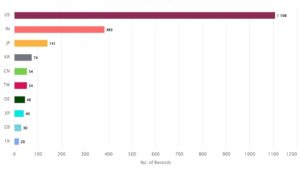
Figure 9: Distribution of Patent based on Priority Countries
As indicated in Figure 9, US (United States) is the priority country for the ECG with 1108 patent family data set. India (IN) is another priority country with 383 patents. Rest priority countries are Japan (JP) with 141 patents, Korea (KR) with 74 patents, China (CN) and Chinese Taipei (TW) with 54 patents each. The lower half priority country include Germany (DE) with 46 patents, Europe (EP) with 40 patents, Great Britain (GB) with 30 patents and France (FR) with 20 patents.
M. Estimated top 10 publication countries between 2022 and 2024
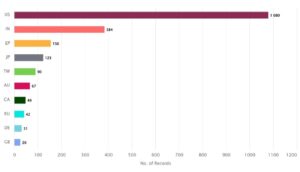
Figure 10: Electrocardiogram (ECG) Distribution of Patent based on Industries& technology
The Figure 10 indicates that the maximum patents belong to the inventors of US (United States) with 1080 patents and rest patents are issued to the inventors of other countries, such as, India (IN) with 384 patents, European Patent Office (EP) with 156 patents, Japan (JP) with 123 patents, Chinese Taipei (TW) with 90 patents being the prominent followed by Australia (AU) with 67 patents, Canada (CA) with 49 patents, Russian Federation (RU) with 42 patents, Germany (DE) with 31 patents and the least ie United Kingdom (GB) with 26 patents .
N. Analysis of ECG Suppliers
Analysis was performed in order to obtain the companies involved in electrocardiogram (ECG). According to the findings of the survey, the majority of firms manufacture intermediates, and quite a few companies involved in electrocardiograms.
The list of companies involved in ECG comprises the companies from different parts of the world involved in electrocardiograms (ECG) production and the irrespective patents and publications. The companies have been mentioned in the analysis of the graphical representation of patent applications under each parameter used for patent landscape analysis.
Apart from the companies list, there are few major companies involved in electrocardiograms (ECG) production:
O. Conclusion
Electrocardiogram (ECG), one of the most popular industrial instruments widely used in the field of medicine and dentistry and for measurement purposes, has opened up new dimensions and vistas for diagnosis on an industrial scale. The study indicates that the substantial number of patents is filed by inventors of the US (United States) and Asahi Kasei Corp (JP) being the major player. The study also shows that there are very less patents filed when it comes to manufacturing industries when compared to medical and dental instruments and supplies industries. This sector is of growing interest as the amount of patenting activity has increased. The data shows that there are maximum published patent families related to the ECG worldwide, of which 909 are from US applicants. The analysis found that the top five applicants represent only 12% of the total patenting activity for this sector. In terms of innovation, the ECG industry may be quite competitive despite the presence of a handful of very large companies.
Author: Roshan Elizabeth Daniel
Please contact us at info@origiin.com to know more about our services (Patent, Trademark, Copyright, Contract, IP Licensing, M&A of companies)
Subscribe to YouTube Channel HERE
Join LinkedIn Group: Innovation & IPR
WhatsApp: +91 74838 06607
Jun 26, 2024 | Contracts
Contracts have become increasingly pivotal due to the expansion of business and commercial transactions driven by our economy’s robust growth. Correspondingly, the number of contract disputes has risen in parallel with this expansion. Consequently, it has become essential to evaluate the remedies available to the parties in such circumstances, as the disagreement often stems from the parties’ failure to fulfill their obligations under the contract’s terms. One such remedy is the award of damages in cases of contract breach. Calculating the appropriate damages, however, requires the consideration of several key factors.[i] This article will examine the multifarious variables that must be taken into account when assessing damages, in accordance with the requirements of statutes and the various types of damages granted to the involved parties.
WHAT ARE DAMAGES?
The Indian Contract Act, 1872 does not provide a formal definition of damages. Nonetheless, damages represent a form of financial compensation awarded to the harmed party by the party that has breached the terms and conditions of the agreement. The underlying rationale for granting damages is to recompense the injured party for the losses they have incurred. Therefore, the party that violated the agreement pays damages to the party who was harmed.[ii] In the case of Common Cause v. Union of India[iii], the Hon’ble defined damages as “Damages are the pecuniary compensation, obtainable by success in an action, for a wrong which is either a tort or a breach of contract, the compensation being in the form of a lump sum which is awarded unconditionally”.
Furthermore, the Hon’ble Supreme Court also outlined three damages requirements in Organo Chemical Industries v. Union of India.[iv] These requirements are as follows:
- Harm Resulting from Wrongdoing: When an individual acts improperly or fails to fulfill their obligations, it inevitably leads to harm being inflicted upon another party.
- Remuneration through Remedies: In such circumstances, the aggrieved individual deserves to be compensated for the damage they have endured as a result of the wrongful actions or omissions.
- Calculating Damages: The damages awarded should be sufficient to not only cover the actual losses incurred by the aggrieved party, but also serve as a deterrent to discourage future misconduct by the breaching party.
By ensuring that the damages are calculated to adequately compensate the injured party and deter future breaches, the legal system can effectively uphold the sanctity of contractual agreements and provide a fair and equitable remedy for those who have been wronged.[v]
CONSEQUENCES OF BREACH OF CONTRACT
The Indian Contract Act of 1872 delineates the regulations pertaining to breach of contract within Sections 73 to 75. These sections outline the repercussions of breaching a contract and the criteria for granting damages.
- Section 73: [vi] This section addresses the pursuit of damages in cases of contract breach resulting in harm. It stipulates that if a party fails to fulfill their contractual obligations, the aggrieved party is entitled to seek compensation. However, compensation is limited to the evident harm at the time of contract formation, excluding any concealed or consequential damages.
- Section 74:[vii] Section 74 pertains to the enforcement of penalties specified in the contract for breaches. Even in cases where the exact losses incurred are not quantifiable, the affected party can claim compensation up to the predetermined penalty amount stated in the contract.
- Section 75:[viii] Section 75 deals with claiming damages when one party terminates a contract due to the other party’s non-compliance. If a party terminates the agreement because the other party fails to fulfill their obligations, they are eligible to seek recompense for any losses suffered.
To delve deeper into this concept, let’s explore practical scenarios that exemplify the application of contractual provisions:
- Nita’s Bathroom Renovation:
Nita engages a contractor to renovate her bathroom for Rs. 25,000. However, the contractor fails to complete the work within the agreed-upon timeframe, rendering the bathroom unusable. In this scenario, Nita has the right to seek compensation for the inconvenience and damages resulting from the contractor’s breach of contract.
- Mohan’s Bike Rental:
Mohan rents a bike with a penalty clause of Rs. 500 per hour for late returns. Upon returning the bike six hours past the due time, Mohan incurs a penalty of Rs. 3000 as specified in the rental agreement. Despite the shop’s inability to precisely quantify the losses due to the delay, they are entitled to enforce the Rs. 3000 penalty in accordance with the contract.
- Rahul’s Catering Mishap:
Rahul contracts a catering company for his daughter’s birthday party, agreeing on a menu and delivery time. However, the catering company fails to deliver the food on the event day, leading Rahul to arrange alternative catering at additional costs. Faced with disappointment and financial burden, Rahul decides to terminate the contract. Consequently, Rahul has the right to claim compensation from the catering company for the damages incurred due to their breach of contract.
These scenarios illustrate how breach of contract situations can unfold in real-life contexts, highlighting the importance of contractual provisions in safeguarding parties’ rights and providing remedies for breaches.
TYPES OF DAMAGES
The purpose for seeking damages dictates the type of damages pursued, leading to various categories of damages:
- General and Special Damages:
- General damages encompass compensation for losses naturally arising from the defendant’s misconduct, requiring no specific proof of the losses incurred. In contrast, special damages are tailored to compensate for anticipated losses under the contract, necessitating evidence of the actual loss suffered.[ix]
- Nominal and Substantial Damages:
- Nominal damages are awarded when there is a breach of contract without tangible financial harm, serving as a symbolic remedy. Conversely, substantial damages address losses that are challenging to quantify but are granted to reflect the severity of the breach and its repercussions.[x]
- Exemplary and Aggravated Damages:
- Aggravated damages compensate for additional harm caused by the defendant’s actions, beyond direct losses from the breach. Exemplary damages, also known as punitive damages, aim to penalize the defendant for egregious behaviour and deter future misconduct.
- Liquidated and Unliquidated Damages:
- Liquidated damages are predetermined amounts specified in the contract for breaches, while unliquidated damages are determined by the court based on the circumstances and projected losses, rather than being pre-established by the parties.[xi]
- Pecuniary and Non-Pecuniary Damages:
- Pecuniary damages are quantifiable by the court to assess the party’s financial harm or loss based on actual damages incurred. In contrast, non-pecuniary damages are challenging to quantify precisely due to their subjective nature, reflecting losses that are not easily measurable in monetary terms.
By understanding the nuances of these various categories of damages, parties involved in contractual disputes can navigate the complexities of seeking appropriate compensation for breaches and losses incurred.
CONCLUSION
The factors mentioned above present a dilemma for the courts in assessing damages. As a result, it’s crucial to consider these factors when determining damages and signing contracts. Because of this, it is recommended that, if feasible, the damages be included explicitly in the contract itself. Ultimately, this helps both parties avoid the cost of legal fees and avoid wasting time and resources on unnecessary litigation. As a result, extensive research must be done before creating a contract and be entered into diligently.
[i] Julie Amadeo, Justin Ben-Asher, James Carolan, Chris Paparella, Steptoe, New York Breach of Contract Damages, Bloomberg Law, (2020) https://www.steptoe.com/a/web/209139/3ZEZ74/new_york_breach_of_contract_damageseco73244.pdf.
[ii] Types of Damages in Contract Law (Section 73 of Indian Contract Act), LAW CORNER (Jun. 31, 2021), https://lawcorner.in/types-of-damages-in-contract-law-section-73-of-indian-contract-act/.
[iii] Common Cause v. Union of India, AIR 1999 DELHI 257.
[iv] Organo Chemical Industries v. Union of India, 1979 AIR 1803.
[v] Susan Buckner, Breach of Contract and Lawsuit, FindLaw, (2023).
[vi] Indian Contract Act, 1872, § 73, No. 09, Acts of Parliament, 1872 (India).
[vii] Indian Contract Act, 1872, § 74, No. 09, Acts of Parliament, 1872 (India).
[viii] Indian Contract Act, 1872, § 75, No. 09, Acts of Parliament, 1872 (India).
[ix] Julie Amadeo, et. al, supra note 1.
[x] Pence Law Firm, P.C., Four Types Of Damages Available In A Breach Of Contract, https://pencelawok.com/blog/four-types-of-damages-available-in-a-breach-of-contract/.
[xi] Gierach Law Firm, LLC, 5 Types of Damages that may be awarded for a Breach of Contract, https://www.gierachlawfirm.com/5-types-of-damages-that-may-be-awarded-for-a-breach-of-contract/.
Author: Gayatri Singh, UPES, Dehradun
Please contact us at info@origiin.com to know more about our services (Patent, Trademark, Copyright, Contract, IP Licensing, M&A of companies)
Subscribe to YouTube Channel HERE
Join LinkedIn Group: Innovation & IPR
WhatsApp: +91 74838 06607
 Courts often utilize an order of injunction which is a court order that prevents a party from performing a specific act which could be detrimental to the aggrieved party. Since the leak of confidential information can have adverse effects, courts often invoke this order. This is seen in cases such as Homag India Private Limited v. Mr. Ulfath Hussain and Others (2016). This was a Karnataka High Court judgment whether the defendant was an employee who had the access to the plaintiff companies’ confidential information. The plaintiff had alleged that the defendant had leaked said information to a rival company. Following the review of evidence and the facts of the case, the High Court remarked that the trial court should have granted an order of temporary injunction. This affirms how important an injunction order is to the aggrieved party so that further information is not leaked.
Courts often utilize an order of injunction which is a court order that prevents a party from performing a specific act which could be detrimental to the aggrieved party. Since the leak of confidential information can have adverse effects, courts often invoke this order. This is seen in cases such as Homag India Private Limited v. Mr. Ulfath Hussain and Others (2016). This was a Karnataka High Court judgment whether the defendant was an employee who had the access to the plaintiff companies’ confidential information. The plaintiff had alleged that the defendant had leaked said information to a rival company. Following the review of evidence and the facts of the case, the High Court remarked that the trial court should have granted an order of temporary injunction. This affirms how important an injunction order is to the aggrieved party so that further information is not leaked.
















